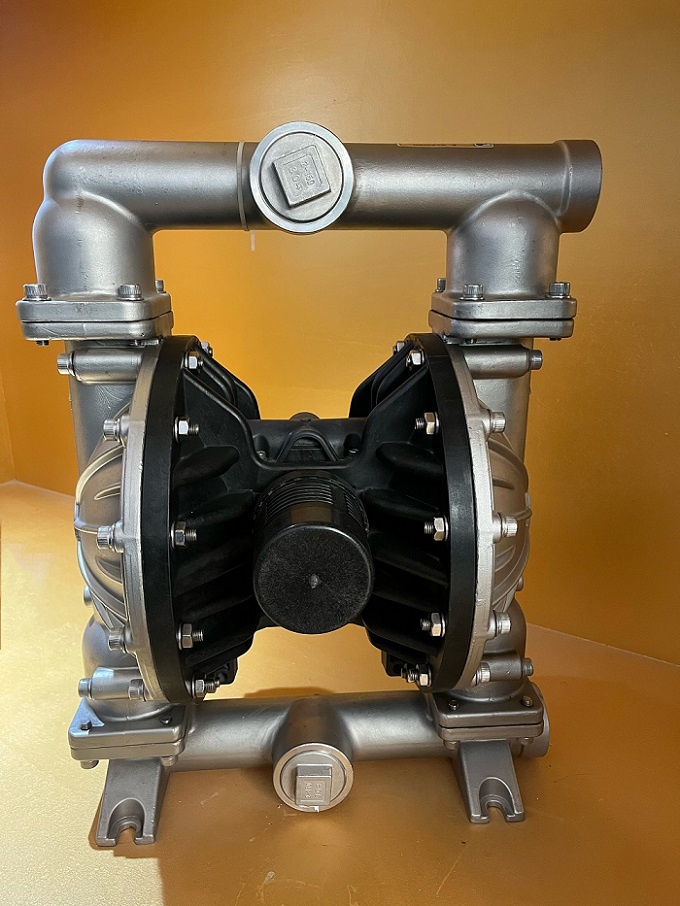Air pipes and suction pipes are indispensable accessories for pneumatic diaphragm pumps. How are they installed? What should you pay attention to? This article will introduce them to you.
1. Installation of Air pipe
The diameter of the suction pipe of the diaphragm air pump should not be smaller than the diameter of the pump inlet. It is necessary to use an unbent suction pipe at the inlet side so that a high vacuum state can occur. The diameter of the outlet pipe should be at least equal to the outlet diameter, or slightly larger to reduce resistance and losses. All pipes and joints must be sealed, otherwise the self-priming capacity of the pump will be reduced.
Pneumatic diaphragm pump device: If the details of the device are ignored, it may lead to unsafe pumping effects and affect the service life of the pump.
Purpose: The orientation of the double diaphragm pump must be convenient for use and facilitate daily inspection and debugging by maintenance personnel.
Air source: Each pneumatic diaphragm pump should have a air pipe. The air pipe should be able to provide enough air to achieve the required pumping flow rate. Air pressure depends on different pumping requirements but should not exceed 8.4 bar.
Device height: Please fully consider the self-priming ability of the pump to prevent self-priming from decreasing.
The device should be selected at the connection of short and straight inlet and outlet pipes. Try to avoid rated elbows and fittings. The pump body should be able to independently support all pipes. In addition, the piping should be placed to prevent stress on the piping installation of the pump body.
Flexible hoses can be installed to relieve stresses caused by the natural reciprocating motion of the pump. If the pump body is connected to a fixed base, the cushioning between the pump body and the base will help reduce pump feel.
2. Installation of pumping pipelines
Each pneumatic diaphragm pump must be connected to a separate suction pipe. The length of the suction pipe should be shortened as much as possible to ensure that the diaphragm pump can pump water, minimize the head loss of the water inlet pipe, and reduce the probability of the suction pipe from being blocked by impurities after water absorption.
The general design data of the flow rate of the pumping pipeline of the pneumatic diaphragm pump is 1.5 m/s, and the minimum should not be less than 0.7 m/s, otherwise the inlet pipeline is prone to sedimentation. When the pumping pipeline is short, the flow rate of the pipeline can be increased to 2.0~2.5 m/s. In order to allow the air in the suction pipe to be quickly evacuated by the self-priming pump, the pumping pipe of the diaphragm pump should not be turned or laid flat. The direction from the pool to the pump should have a slope from low to high, with a slope of 0.005 degrees.
If the connection between the pumping pipeline of the pneumatic diaphragm pump and the water pump needs to be reduced in diameter, an eccentric small and large head must be used. The suction inlet under the pool should be installed with a bell mouth. The diameter of the bell mouth is 1.3 to 1.5 times the diameter of the suction pipe of the self-priming pump.
When the liquid transported by the pumping pipeline is sewage, do not install a bottom valve on the pumping pipeline, because after installing the bottom valve, it will easily block the bottom valve, making it difficult for the self-priming pump to absorb water, which will easily aggravate the head loss of the self-priming pneumatic diaphragm pump and reduce the flow rate.
The above is an introduction to the installation knowledge of the air pipe and pumping pipeline of the pneumatic diaphragm pump. I hope to give you some reference and suggestions.

